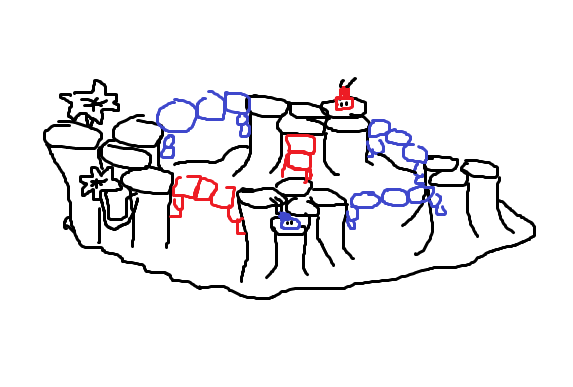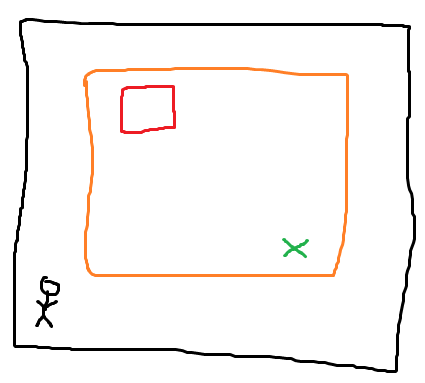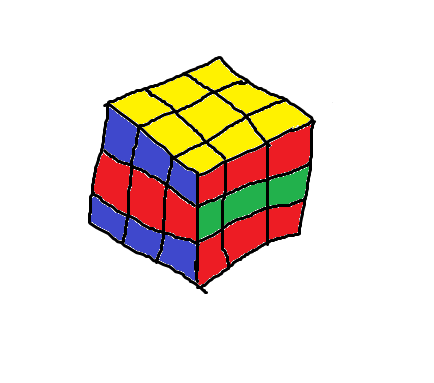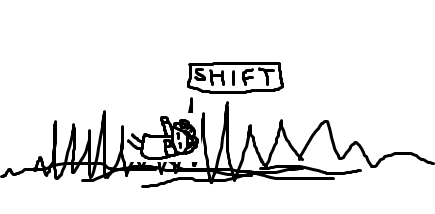Reset and Undo in Puzzle Games
Puzzle games often include reset and undo features. While convienient, these features are actually necessary to escape "dead end" game states. If all the possible states of a puzzle were expressed in a state diagram, the reset feature is a way to jump to the starting state from any state, and the undo feature is a way to travel backwards along steps previously taken.
I think it's worth thinking about these features, the different ways they have been used in games, and their influence on puzzle game design.
It's possible for the steps in a puzzle game to be reversible, meaning that you can undo them in-game without needing an undo feature. The state diagram for that game would be undirected - any two states are either connected in both directions or unconnected, never connected in a single direction. Puzzle games with reversible steps often include the reset feature, though sometimes undo isn't included because you can just undo steps naturally inside the game.

No dead ends by careful level design
It could be interesting to see a game that uses potentially non-reversible game mechanics, but prevents dead end states only by careful level design. Here's an example of what that could look like, in a hypothetical block pushing game:

Perhaps the game could be about trying to put the levels into these dead end states? These kinds of levels sound really tough to design, but that could be an interesting idea to explore.
In-game reset and undo features
Reset and undo available with button/key presses or accessed with menus are convenient, if a bit immersion breaking. Some games use an in-game reset mechanic, which can make sense in certain settings. In Portal 2, there are buttons that cause a box to be dispensed. Pressing the button again will remove the existing box and create a new one - usually resetting the puzzle.
Typically in adventure games (Zelda or similar), leaving a room and re-entering will reset the puzzle inside it. This is a simple way to offer a reset function without constructing an elaborate reason why a reset button is in the environment. However, it can be a little bit odd to think "I want to reset this room, so I'll leave and come back" though.
Physical Puzzle Games
Physical puzzle games are generally fully reversible. If you got one stuck in a dead-end state, the puzzle would be broken and unusable.
For example, a Rubik's Cube has a single solved state, and it is spun randomly ("Scrambled") to create a "level". The challenge is to then move around the state diagram towards the solved state. There are many possible paths from scrambled to solved, but one guaranteed path would to undo each step taken while creating the scrambled cube

Sliding block puzzles, such as the 15 puzzle, are similar to the Rubik's Cube, in that you scramble the pieces to create a "level", and can reverse the scrambling to solve it. They are perhaps a little easier to understand, since all the information is on one side.
Neat Twists on undoing
Most real-time puzzle games only have a reset function, not undo. Since there aren't individual, discrete steps taken, the regular undo function doesn't apply. However, in Braid, the player can freely rewind time, which acts as a sort of a continuous undo. Later levels interact with time rewinding in different ways, so it stops just a mistake-fixing mechanic.

Another interesting twist on the Undo idea was explored in So Broken, a block-pushing game where only the boxes are affected by using Undo - not the player.
Conclusion
Undo makes it easy for player to experiment, and if the sequence of steps is tricky to do perfectly you can fix minor mistakes, but may lead to flailing if the player just starts trying stuff and quickly undoing. In difficult puzzle games like Steven's Sausage Roll and Snakebird, solving a puzzle requires following a very precise sequence of steps, usually with very little leeway. Without an undo button you would have to memorize the whole solution you want to try, and a small mistake could mean you have to start over. The presence of the undo button has allowed these games to make their puzzles very difficult - they have compensated for the increased convenience to make games that couldn't exist in that form otherwise.